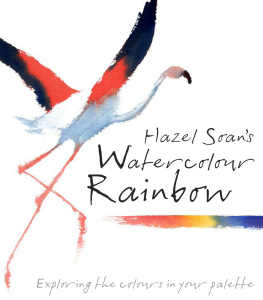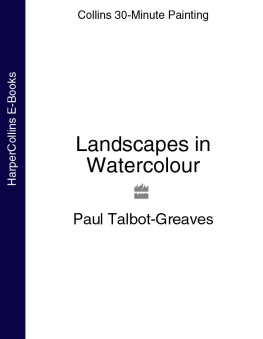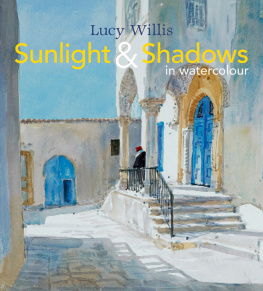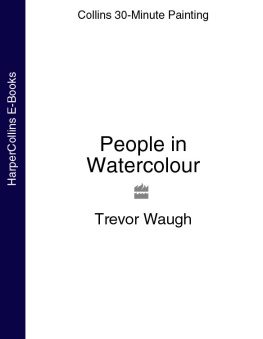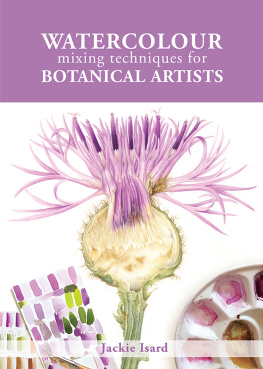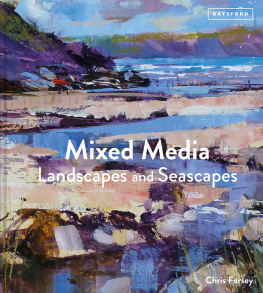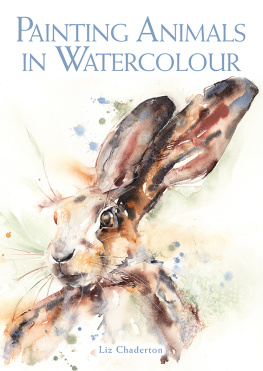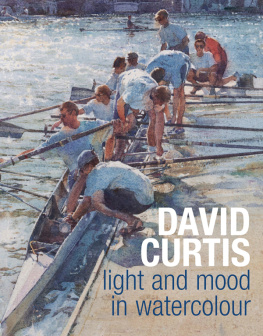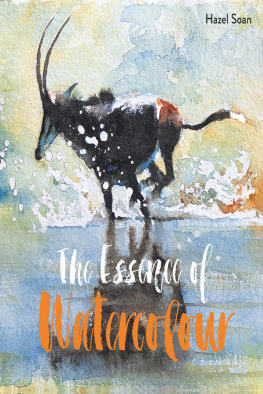Glen Scouller
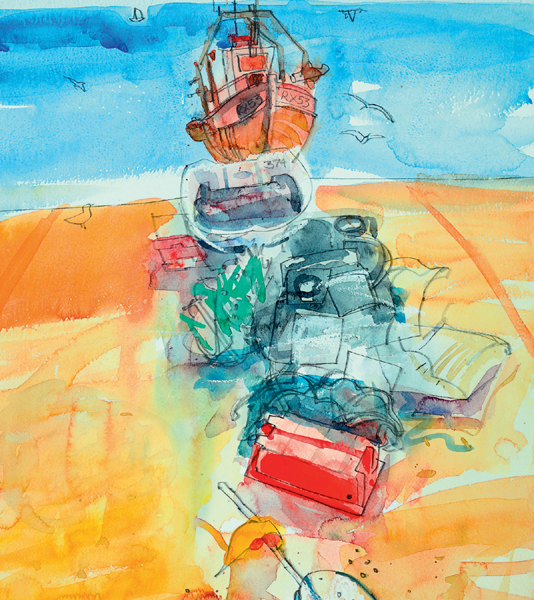
Boat and Fishing Paraphernalia, Hastings
Watercolour, Berol Karismacolor water-soluble pencil, oil pastels, Waterford NOT paper, 71 x 53 cm (28 x 21 in.) Collection of the artist
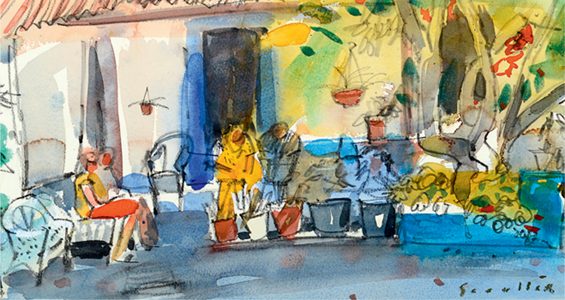
The Conversation, Falacho, Portugal
Watercolour, Berol Karismacolor water-soluble pencil, white oil pastel, Waterford NOT paper, 23 x 42 cm (9 x 16 in.) Private collection
Glen Scouller

Contents
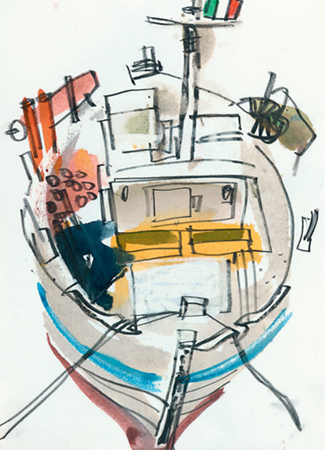
Small Boat, Sicily
Paolo Olbi handmade, leather-bound watercolour sketchbook, watercolour, white oil pastel, water soluble pencil 23 x 30 cm (9 x 12 in.) Collection of the artist
Introduction

The Church, Mexilhoeira Grande, Algarve, Portugal
Watercolour, pencil and oil pastels, Waterford 300 gsm NOT paper 53 x 71 cm (21 x 28 in.) Private collection
A strange thing happens when I cant get far enough back from my subject, and this beautiful old Portuguese church, with its trees stripped of their leaves in winter, is a typical example. The verticals appear to be distorted as if seen through a fish-eye lens. This is not something I do consciously: it just seems to happen naturally in my attempt to fit everything I want into the picture, but I rather like the dynamic effect it has on the composition.
Watercolour is a swim in the metaphysics of life... a mirror of ones own character. Let it be unpredictable and colourful.
Anonymous
The mere mention of watercolours to some contemporary artists is often met with a reaction of derision and disdain: in their eyes, the medium is in the bracket of the hobby artist or Sunday painter. This is despite the fact that the use of watercolour was firmly established in British painting history by eighteenth-century and nineteenth-century English artists such as Turner (17751851), Cotman (17821842), Sandby (17311809) and their contemporaries. The rise of watercolour painting was also tied to a growing acceptance in Britain of landscape as an appropriate subject for painting. The use of watercolours by these pioneering artists had a truly liberating effect on the nature of art for future generations. Artists now had a medium that was easily transportable, and there was no need to carry around easels, canvases or other heavy equipment. They were no longer tied to creating art within the four walls of a studio: the whole world opened up as a studio.

The Spongeware Jug
Watercolour, Waterford 300 gsm NOT paper 53 x 71 cm (21 x 28 in.)
Private collection This is an example of an early watercolour where the sumptuous colour and pattern made by the objects grouping was what charmed me. There is no under-drawing involved: here I simply relied on all my senses and got straight into the colour washes and mark-making, firstly with a large mop brush. Then, with a smaller brush, I added dots of pattern where they appeared on the jug and various bits of exotic fruit.
By its very nature, watercolour can be a fickle, infuriating and elusive medium, where mistakes are difficult to remedy and the applied colour sometimes appears to have a mind of its own. This, however, is one of the things I like about watercolour its unpredictable nature and the need to go with the flow when using it. Accidents happen and marks, blobs, dribbles, spatters etc. can all be exciting if successfully fused into a painting. David Hockney is quoted as saying that you cant cover up mistakes, and there is an element of truth in that statement, but only if you are making watercolours in a very purist, traditional manner. I prefer to take an approach that says if it works then anything goes. But perhaps not to the extremes of Francis Bacon, who mused: I use all sorts of things to work with: old brooms, old sweaters, and all kinds of peculiar tools and materials.
He was, of course, referring to his oil paintings, so maybe that approach is not best suited to watercolour painting but who knows, Ive never tried such methods!
To achieve a truly successful watercolour painting is a bit of a balancing act. On the one hand, you have the aqueous pigment wanting to go its own way, and on the other hand, you must have a certain degree of control. Getting this delicate balance right is difficult, but the results can be magical. No other medium possesses the limpid quality of watercolour, where transparent washes appear to float on the paper.
The discipline of working from life

Pelicans, London Zoo
Staedtler clutch pencil with 4B lead, Hahnemhle sketchbook 297 x 210 cm (11 x 8 in.) Collection of the artist
Animals are nearly always on the move and it is challenging to try and capture something of their character, as with the pelican. Its beautiful, elegant shape reminded me of a Gaudier-Brzeska sculpture. These are two of many sketches I did at London Zoo, where these particular two birds obliged me by not moving too much!
If you are not skilful enough to sketch a man jumping out of a window in the time it takes him to fall from the fourth storey to the ground, you will never be able to produce great works.
Eugne Delacroix (17981863)
In the late 1960s and early 1970s I received a fairly classical training in drawing and painting at Glasgow School of Art, with the emphasis firmly on drawing from the life model. This disciplined way of working has stood me in good stead throughout my professional career.
Drawing has always been important to me and its something I enjoy doing on an almost daily basis. Sadly, nowadays art schools have moved away from this tried and tested method of training and I strongly feel that todays students are missing out. Today the emphasis is more on intellectual input from the student rather than the physical, practical act of doing: they are asked to write about a still life rather than paint it; take a photo of a nude rather than draw it. I ask myself when the course directors will acknowledge that learning the core essentials of handeye observation/coordination is essential and will make a better artist, no matter what future route the student decides to pursue within the broad spectrum of the visual arts. Of course the sad thing is that a lot (if not most) of the tutors employed nowadays at art school level have themselves never received or have never had an interest in the core elements of drawing and painting, probably dismissing it as too old-fashioned and not fashionably cutting edge!


